Best Practice AMP 2024 - These Are Outstanding.
- Technical
- April 2, 2024
- 7 Comments
Practice is the key to unlocking your musical potential. There’s no other way around it. This is why getting the best practice amp is essential. Here we’ll help you find a suitable guitar amplifier to inspire you to play better.
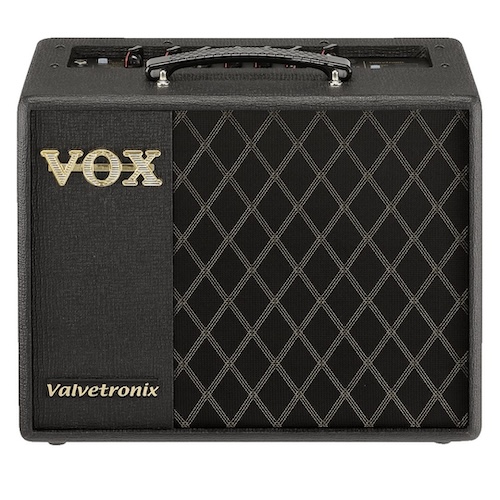
Vox VT20X
A versatile practice amp that combines digital amp modeling with a genuine 12AX7 preamp tube. It produces inspiring tones that include Vox' distinct British clean sound.
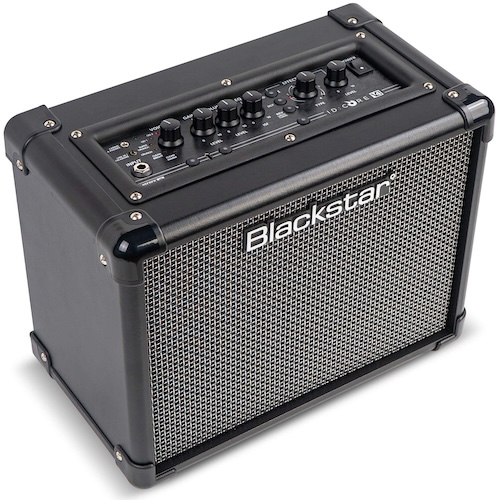
Blackstar ID:Core 10 V4
Good distortion tone at lower volume is the specialty of the ID:Core 10 V4. This is the perfect practice amp for fans of rock and metal.
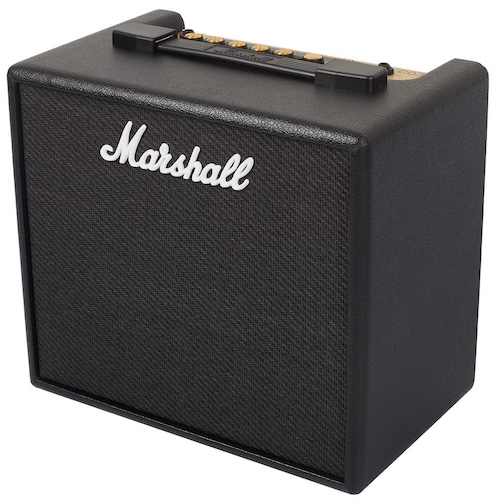
Marshall Code 25
An affordable practice amp from Marshall, with modern amp modeling, built-in effects, and Bluetooth connectivity
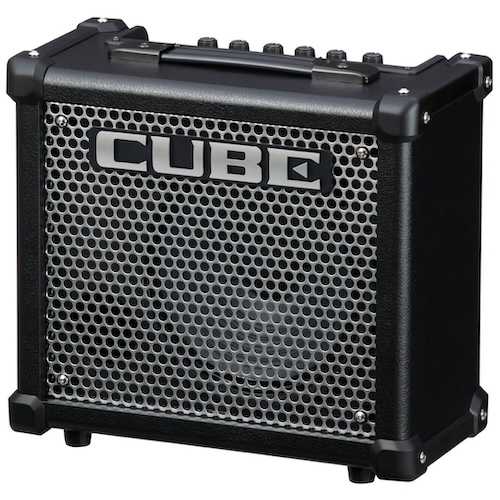
Roland Cube 10GX
Among the top-selling practice amps in the world. the Cube 10GX combines portability, affordability, features, and good tone.
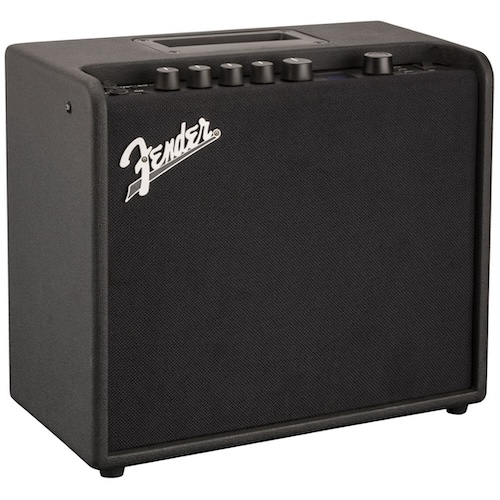
Fender Mustang LT 25
This amp gives you iconic Fender clean tones in a compact and affordable package, with the modern flexibility of amp modeling and effects.
We’re reader-supported. When you click product links on our site, we may earn an affiliate commission at no extra cost to you.
You can have fun while taking your guitar playing to the next level with the proper practice tools.
Featured here are our top picks, versatile amps that are easy to set up and conducive to practice.
More importantly, these amps sound good at lower volumes, so you don’t have to disrupt the people around you.
We’ve provided detailed descriptions for each and why we and many others regard them highly.
The Best Practice Amps for Guitar
Vox VT20X
Best Practice Amp – Tone

Vox VT20X Hybrid Combo Guitar Amp
Guitarsite Expert Opinion
Vox certainly knows how to build good amplifiers, serving as the backline for iconic bands like The Beatles, The Rolling Stones, The Who, U2, and many more. And their brand of quality is evident even in their entry level amps, the best of which is the Vox VT20X, a hybrid digital-analog amplifier. It combines modern amp modelling technology and an old-school tube preamp section.
We’re reader-supported. When you click product links on our site, we may earn an affiliate commission at no extra cost to you.
Thanks to its use of real tube, this amp has good response and dynamics, while retaining some of the flexibility of digital amps. And all this is packed inside a compact and affordable combo amplifier.
At the core of this amp is the Valvetronix preamp. It features a multi-stage 12AX7 tube-driven circuit reproducing tube amps’ dynamic response and characteristics.
This is paired with a digital-analog hybrid power amp section reproducing Class A and Class AB tones.
In between the two is a digital sound processor that lets you choose from 11 amp models (Up to 20 when using the editor software). This allows for a wide variety of tones with genuine tube character.
On top of all that, this amp has 13 built-in effects that include modulation, delay, reverb, tremolo, and more.
It also lets you save your settings into any of its 33 presets (expandable to 60 when using the editor/librarian software).
Its power rating of 20 Watts and 8″ speaker give it enough power for band practice sessions or small venue events. It can also quiet down further for home practice or go the quiet route via its headphones output.
Finally, the amp has an aux input for playing along with your favorite tracks. Retailing at just under $180, the Vox VTX20 is one of the best practice amp deals in the market.
Pros:
- 12AX7 Tube Preamp
- Classic Vox Jangly Tone
- Built-in Amp Models and Effects
Cons:
- Some amp models and effects sound better than others
Specifications: | |
|---|---|
20 Watts | 1×8″ Speaker |
Preamp Tube: 1 x 12AX7 | Amp Class and Bias Shift |
20 Amp Models and 13 Effects | Onboard Chromatic Tuner |
Headphones Output | Aux Input |
USB connectivity | Weight: 16.09 lbs. |
Blackstar ID:Core 10 V4
Best Practice Amp – High Gain

Blackstar ID:Core 10 V4 Combo Guitar Amp
Guitarsite Expert Opinion
Blackstar continues to make waves in the amplifier market. They receive good reviews and expert recommendations and have lots of endorsers. The ID:Core 10 V4 is one of their top rated practice-friendly guitar amps. It gives you impressive tone shaping at practice-friendly volumes. And it also helps that it’s compact and portable.
We’re reader-supported. When you click product links on our site, we may earn an affiliate commission at no extra cost to you.
As expected from Blackstar, this compact amp handles high gain tones nicely and does so at lower volume levels.
But it’s not just about rock and metal because this amp has six amp voicings, including the usual amp stereotypes.
All six amp sounds can be further tweaked via Blackstar’s ISF (Infinite Shape Feature). This allows you to morph the tone to American or British flavors.
At 10 watts, this is a very quiet amp. It has two 3″ speakers, giving it a more transparent sound at lower volumes. And with the built-in power attenuator, you can lower the power to 1W for great sounding cranked tones at bedroom volume levels.
It can be cranked for low-volume jams, but it is mainly meant for solo practice.
A headphones output is available for quiet practice. And there’s an aux input for jamming along with your media player.
Finally, this amp has a USB out that allows direct recording to your computer. This convenient feature adds even more to the ID:Core 10 v3’s overall value.
For the price, you are getting more use from this than a regular amp.
Pros:
- Great for sounding overdrive and high-gain tones,
- Versatile Voicings
- Built-in 1 Watt Power Attenuator
Cons:
- Clean tone is not as good
- Limited volume for solo practice only
Specifications: | |
|---|---|
10 Watts | 2×3″ Speaker |
Stereo Speaker | Blackstar’s ISF EQ control |
6 Amp Voicings and 12 Effects | Built-in Power Attenuator Down to 1W |
Headphones Output | TRRS Line In/Streaming input |
USB C connectivity | Weight: 9.68 lbs. |
Marshall Code 25
Best Practice Amp – Feature Set

Marshall Code 25 Combo Guitar Amp
Guitarsite Expert Opinion
Marshall is known for being the amp of rock stars. It has served many virtuosos, including Jimmy Page, Angus Young, Slash, Joe Perry, Eric Johnson, Steph Carpenter, and others. They have since expanded into the entry-level market with amps like the Marshall Code 25, allowing beginners to experience the Marshall magic for practice.
We’re reader-supported. When you click product links on our site, we may earn an affiliate commission at no extra cost to you.
This digital modeling amp caught our attention with its classic Marshall tones, modern amp modeling, and practice-friendly profile.
Instead of merely picking an amp model, Marshall Code 25 breaks it down further into the preamp and power amp components.
It starts with 14 preamp models, including popular Marshall classics, including the Bluesbreaker Plexi, Silver Jubilee, and JCM800.
They can then be matched with your preferred power preamp, divided into four types.
Mixing and matching the preamp and power amp settings allows you to achieve vintage, modern, British, and American flavor tones. But this can be a bit daunting for novices who have no idea how different preamps and power amps sound like.
There are plenty of good sounding presets, especially the ones that reproduce classic Marshall crunch tones. But there are also some bad apples.
There are also eight speaker simulations to choose from, which adds to the depth and complexity of the sounds you can craft.
Marshall also equipped the Code 25 with 24 digital effects, which expands your sonic palette even further.
All these features are packed in a compact combo amp with 25W of power and a 10″ speaker, a combination that’s ideal for practice, be it solo or with a band.
Other features include modern Bluetooth connectivity for wireless amp control, direct USB recording, aux-in port, and headphones out.
If you’re looking for a practice amp with significant brand backing, check out the Marshall Code 25.
Pros:
- Mix and match preamp and poweramp models,
- Bluetooth connectivity
- Marshall backed tone and quality
Cons:
- Some presets need tweaking to sound good
- Can be too complex for novices
Specifications: | |
|---|---|
25 Watts | 1×10″ Speaker |
14 Preamps and 4 Power Amp Models | 24 Digital Effects, Three Band EQ |
8 Speaker Cab Modeling | Built-in Power Attenuator Down to 1W |
Headphones Output | TRRS Line In/Streaming input |
USB and Bluetooth connectivity | Weight: 13.4 lbs. |
Roland Cube 10GX
Best Practice Amp – Easiest to Use

Roland Cube 10GX Portable Guitar Amp
Guitarsite Expert Opinion
The Roland Cube series remains a top contender in the entry-level and portable amp market. We specifically recommend the Cube 10 GX because of its good balance of affordability, portability, simplicity, and tone.
We’re reader-supported. When you click product links on our site, we may earn an affiliate commission at no extra cost to you.
It is a solid state amp rated at 10 watts, paired with an 8″ speaker. This combo amp is unsuitable for band practice or gigging but provides enough juice for solo practice. This is where it excels.
It is a simple practice amp. It has easy amp modeling and high-quality effects. These effects are ready to use.
The Cube GX has a sound quality similar to the expensive Roland/Boss guitar processors. However, it is not as loud and lacks some features.
It includes built-in effects based on actual Boss pedals, such as chorus, delay, reverb, and spring. And it has a plug-and-play selection of amp tones: clean, crunch & lead.
Finally, the Roland Cube 10 GX is housed in a sturdy combo amp cabinet. For the price, this is the amp to get if you want a reliable plug-and-play amp.
If you’re willing to expand your budget and looking for a more modern amplifier, check out the Katana series of amps, coming from Roland’s sub-brand Boss.
Pros:
- Great sounding cleans
- Good quality built-in effects
- Easy to use
Cons:
- Not loud enough for band practice
Specifications: | |
|---|---|
10 Watts | 1×8″ Speaker |
COSM Amp Models (Swappable) | COSM 3 x Effects |
Mobile App control iCube Link | Headphones Output |
Aux Input / iCube Link | Weight: 10.37 lbs. |
Fender Mustang LT25
Best Practice Amp (Overall)

Fender Mustang LT25 Modeling Amp
Guitarsite Expert Opinion
all Fender had to do to produce good practice amps was to retain their signature clean tone. But they didn’t stop there. They made the price more accessible and added modern amp modeling and effects. This is the reason why the Fender Mustang LT25 is highly recommended.
We’re reader-supported. When you click product links on our site, we may earn an affiliate commission at no extra cost to you.
There’s no denying the popularity of Fender amps. They have many big-name artist users, including Larry Carlton, Jerry Garcia, Brian Setzer, Mike Bloomfield, Eric Johnson, Eric Clapton, Jeff Beck, and many more.
And this iconic clean sound is present in this compact practice amp, with the added flexibility of built-in amp modeling and effects.
With its 25W amplifier and 8″ speaker, the Fender Mustang LT25 is meant to provide good tones at lower volumes.
But what makes it even more remarkable is that it sounds good even when you crank up the volume, able to handle band practice reasonably well for the size.
Fender installed a headphone jack for quiet practice, so you can practice without disturbing your family or neighbors.
The top-mounted control interface provides ample control over the sound, but you can get even more control by connecting the amp to your computer via USB and using the Fender FUSE software.
The amp can also double as an audio interface to record directly to your computer.
The version 2 software update further expands the amp’s capabilities, showing Fender’s commitment to keeping the Mustang series relevant.
The Fender Mustang LT25 costs around $160.
Pros:
- Great sounding Fender cleans
- Good versatility without being over complex
- Sleek aesthetics
Cons:
- Limited Tone Options
Specifications: | |
|---|---|
25 Watts | 1×8″ Speaker |
20 Amp Models | 25 Effects |
Built-in Tuner and Tap Tempo | Headphones Output |
USB connectivity | Weight: 14.9 lbs. |
Orange Crush 12
Best Overdriven Tone
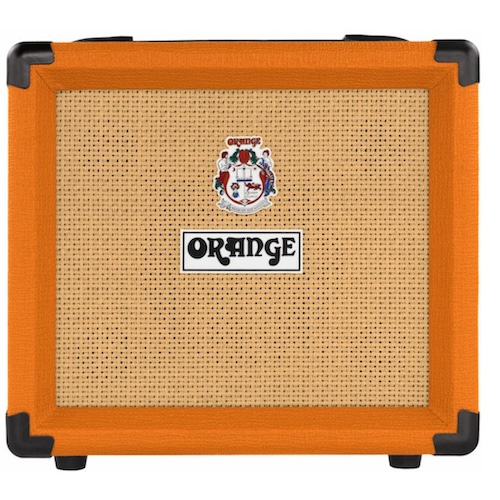
Orange Crush 12
Combo Guitar Amp
Guitarsite Expert Opinion
The Orange Crush 12 is meant for those who prefer a straightforward, affordable practice amp. It strays from what other amps offer and is streamlined for a more traditional workflow.
We’re reader-supported. When you click product links on our site, we may earn an affiliate commission at no extra cost to you.
There are no amp modeling or multiple effects to get hung up on, just good old basic controls for gain, volume, and 3-band EQ.
You can plug and play with minimal tweaking and get a transparent tone that lets you focus on technique to get the right sound rather than gear settings.
The overdrive circuit of this amp is its main selling point, commended by many for its quality and response.
This is all thanks to the good solid-state amp reproduction of the overdrive in the popular Rockerverb tube amp. It has similar big-sounding rock-friendly tones but achievable at lower volumes. You can always plug in your preferred pedals if you want effects.
Orange amps easily stand out from the usual black-colored amplifiers. The Crush 12 has a distinct exterior with basket weave Tolex, woven speaker grille, and orange picture frame edging.
It also features icons as control labels in a compact and portable profile.
So the bottom line is you get a great practice amp that’s easy to use, easy on the eyes, and easy on the ears.
This compact 12-watt amp drives classic tones into a 6″ speaker. You can consider the Crush 12’s siblings, like the Orange Crush 20.
Even if you already have bigger amps, this is an excellent buy for just over $100.
Pros:
- Great sounding Orange overdriven tone
- Distinct Orange picture frame appeal
- Simple operation
Cons:
- Clean tone is not as good
- One (or two) trick pony
Specifications: | |
|---|---|
20 Watts | 1×8″ Speaker |
2 Channel (Clean / Dirty) | Headphones Out |
Weight: 15.8 lbs. | |
What To Look For in a Practice Amp
Volume / Projection
Most practice solid-state amps are designed to give you good tones at lower volumes. But they also should have enough projection to fill an average size room.
This is why they are usually smaller and have lower power ratings.
These compact, low-power amps are ideal for solo/quiet practice. They are great for musicians living in dorms, apartments, etc. These amps can help you avoid disturbing the neighbors while practicing.
Plugging your headphones into an amp is the quietest option. But many still prefer amps with speakers because they sound more natural.
For those practicing with a band, you’ll want to look for louder amps that can be heard over drums, bass, keyboards, and other instruments.
20W amps can do reasonably well if your bandmates control their volume. You can use amps with more power and bigger speakers to be safe.
However, loud amps can be harder to use in low-volume room practice, especially when the amp requires you to crank up its volume to get good tones.
Amp Modeling & Effects
Most practice amps are digital modeling amps to allow for more tone options. They have built-in valve amp modeling and effects. They offer more value and allow for greater sound options.
They help you comprehend the sound and feel of many tube amps. Which helps you pick the right valve amp models that suit your needs. Aside from amp models, these amps also come with built-in effects like digital reverb, delay, chorus, and more.
This saves money and provides a practical learning experience.
Amp models let you go from clean to crunch and up to modern high gains.
Some go beyond electric guitar and have acoustic guitar amp and bass amp models. Some even have three bass amp models and more.
Effects usually include reverb, delay, and modulation.
On the flip side, don’t get too carried away tweaking knobs and pushing buttons. You might waste time tweaking the amp instead of practicing. Don’t dismiss simple practice amps yet.
Don’t underestimate simple practice amps. They are perfect for quick practice sessions, especially if you enjoy the sound of an electric guitar plugged into an amp, as I do.
They are also ideal for getting your tones from a separate guitar effects pedal or processor.
Practice Friendly Features
When buying a new practice amp, you have to consider its practice friendly features.
Aux inputs allow you to play with your favorite songs or backing tracks, while the headphones allow for silent practice.
Bluetooth connectivity is also a plus since it lets you stream songs to the amp wirelessly.
Having a built-in tuner is also handy for setting your guitar up. Amps with a built-in metronome are highly recommended since timing and tempo are fundamental to playing guitar.
The looping function is also helpful in building your chops. At the same time, onboard USB direct recording allows you to critique your playing and make the necessary adjustments.
If you’re looking to practice setup involves using your pedalboard, then you need a practice amp with an effects loop.
Having a headphones output turns your guitar amp into a headphone amp, allowing you to practice quietly. Headphone amps are still more portable though, and are highly recommend if you want a compact solution for playing through your headphones.
Configuration and Portability
Most practice amps come in traditional combo configurations. The amp and speaker are housed in a single cabinet meant to sit on the floor.
There are practice combo amplifiers that are portable. They come with convenient features like a carry strap, battery power option, compact size, and lightweight.
These amps are great for musicians who are always on the move but still want to keep their guitar playing sharp.
These days, the guitar world is flooded with smaller and longer profile amps that are meant to sit on desks/tables. Positive Grid’s Spark amps are excellent examples of this. These are often equipped with USB direct recording, serving as USB Audio interfaces. The downside to these amps are they are pricey, but they are definitely worth looking at if you want a home studio recording amp that can double as a guitar practice amp. In addition to the Positive Grid Spark, you can also look at Yamaha THR series desktop stereo combo amps.
There is also the option of using your phone as your headphone guitar amp. All you’ll need is an audio interface to connect your guitar to your phone, and an app with modelling amps – like the Positive Grid Spark app, or the IK Multimedia Amplitube app.
The downside to a little amp that sits on a desk is the lack of volume – it won’t have enough volume for jamming with other musicians AKA band practice.
Whichever your musical preference, you’ll find the best practice amp that suits your need from our selection above.
If there’s a practice amp that you think is good enough to share to your fellow guitarists, drop the brand and model name below, and share your experiences.
Alexander Briones
Lead Author


7 thoughts on “Best Practice AMP 2024 – These Are Outstanding”
Over the years I’ve had several practice amps. What I have concluded over time is that the best practice amp is not an amp at all. Rather, for your consideration, think about getting a small powered studio monitor. Something like the KRK Rokit with a 4 inch speaker (30 watt). Then, pair this with a small mutli effects process. Both the Rokit and the multi effects can be had under the $100 buck mark. If you are patient and shop carefully, you can be in at about the 150 Mark for both. Recently I purchased a 4″ Rokit and a Mooer PE100 for total price tag of $156. It was 90 for the Rokit and 66 for the Mooer.
In terms of multi-effects, there are lots to choose from and you should research. Some common ones are Mooer, Nux, Line6, and Korg Pandora. Many others so just watch some online clips and see what suits your playing style. Some key features that some have and others don’t which is worthy of your consideration as you pick a unit would be:
– built in tuner
– a bypass function. if you play acoustic too this can be helpful, though I would plug straight into the studio monitor.
– looper
– some have bluetooth, others don’t. Generally with have RCA input and headphone jacks for private playing.
– some have a USB computer interface
– drum tracks
– some have a computer interface, software and sharable patches/tones
Some of this you likely will value, others not. Some will tend to favor blues/jazz. Some will tend to favor metal/crunch/Rock. All do some degree of crossover. This is likely where you will make your final decision.
One final word… you must use a powered speaker in this configuration. The small effects units do not have an amplifiable ability other than the headphone jack I mentioned.
So if you are looking for great sound, try this approach. The Rokit provides much more richness and control at lower volumes. The effects pedal lets you choose features and sounds consistent with your needs and play.
I have a Micro Terror head with the 12ax7 swapped out with a NOS Golden Lion 5751. Cheap setup but sounds awesome. I can run a Dr Beat into it or blues backing tracks from my phone downloaded off the net. The speaker box is 10″ un named brand with a Jensen PR10 & a Brake Lite fitted to it so I can adjust output volume. The Micro Terror also has a output jack for headphones or recording. Get a slight buzz from the amp using the USA Hamer with TV Classics but no noise with the 62 Epi. Wilshire with the stock P90’s.
I just recently bought Mustang II (v2) & I love it. I paid only &120 on eBay but they normally cost $199 new. I also have a brand new Fender G-DEC Thirty (v2) and it has everything a person would want including a band to practice with. I paid $130 and they normally run about $350 but well worth it. It’s plenty loud enough with a 10″ speaker with 30watts. The Mustang II has a 12″ speaker and it’s 40 watts but sounds like 30 on some settings.
VHT Special 6. Or Ultra w fx loop. My friend brought over his Peavey Rage & my Vht blew it away. Seriously, they’re cheap, u can change the tubes & they sound like honey. & I’ve had the micro cube.
I tried several of the amps you have listed here,
and I find it strange that you did not include
the one I ended up buying. After messing
around with many,
I decided on the VOX Mini3
as it takes AA batteries and I bought
rechargeable eneloop 2500Mah’s.
Another really good one is the
Pignose Hog20 !!!!
I consider the Fender Champion X2 an excellent practice and gig amp for around $379(free shipping). The clean channel is great sounding for my Tele. Channel two has DSP effects that emulate 16 fender amps. Try voicing #8 and super sonic voicing (#13 I believe). Pedals are not necessary but can be added to your mix.
For a beginner I would still recommend the Line 6 Spider IV 15 – but if you’ve got a bit more experience, then I’d thoroughly recommend the VOX Mini 3 – as an added bonus it has the VOX logo on it 🙂